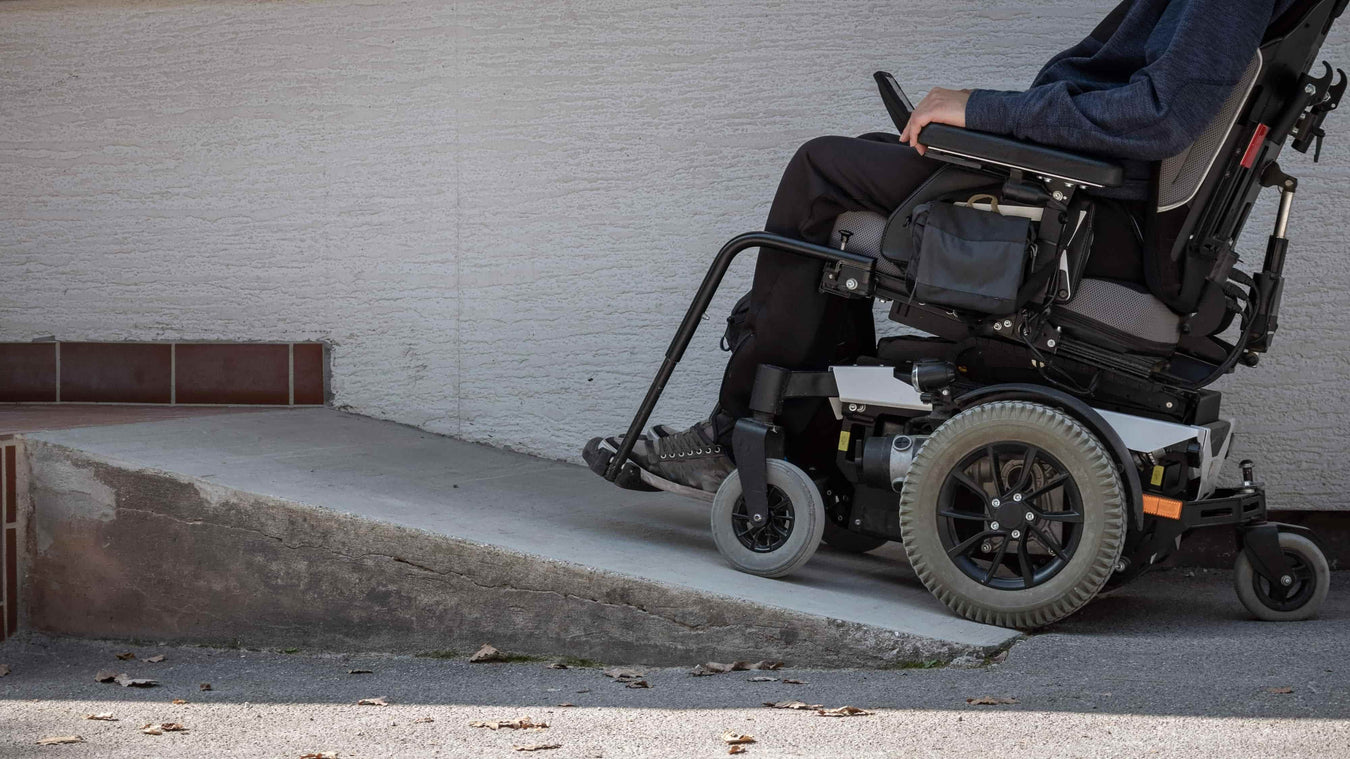Imagine waking up one day and realizing that something as simple as walking feels like an uphill battle. Whether it's due to injury, illness, or aging, losing mobility can feel overwhelming. But here's the good news: restoring mobility is not just possible—it's within your reach. In this article, we'll dive deep into the world of mobility restoration, exploring everything from exercises to therapies and lifestyle changes that can help you regain your independence.
Now, let's be real for a second. Mobility is one of those things you don't really think about until it's gone. It's like your Wi-Fi connection—you only notice it when it slows down or stops working altogether. But hey, life doesn't have to stop just because you're facing mobility challenges. With the right mindset, resources, and strategies, you can restore mobility and get back to doing the things you love.
Whether you're recovering from surgery, dealing with chronic conditions, or simply looking to stay active as you age, this guide has got you covered. We're not just throwing random tips at you; we're breaking it all down step by step so you can make informed decisions about your journey toward restored mobility. So buckle up, because we're about to take you on a ride!
Read also:Drake Dick Video The Viral Phenomenon And Its Impact On Pop Culture
Table of Contents
- What is Restore Mobility?
- Common Causes of Mobility Loss
- Benefits of Restoring Mobility
- Exercises to Restore Mobility
- The Role of Physical Therapy
- Assistive Devices for Mobility
- Nutrition and Mobility
- Mental Health and Mobility Restoration
- Emerging Technologies in Mobility Restoration
- Practical Tips for Long-Term Success
What is Restore Mobility?
Let's start with the basics. When we talk about restoring mobility, we're referring to the process of regaining the ability to move freely and independently. This could mean anything from improving joint flexibility to enhancing muscle strength or even learning how to walk again after an injury. Mobility restoration isn't just about physical movement—it's also about reclaiming your confidence and quality of life.
Why is Mobility So Important?
Think about it—every single thing you do throughout the day requires some level of mobility. From brushing your teeth to running a marathon, movement is the foundation of our daily lives. Without proper mobility, even the simplest tasks can become frustrating or impossible. That's why restoring mobility is crucial for maintaining independence and overall well-being.
Common Causes of Mobility Loss
Before we jump into solutions, it's important to understand the root causes of mobility loss. Here are some of the most common reasons people experience mobility issues:
- Injuries such as fractures, sprains, or ligament tears
- Chronic conditions like arthritis or multiple sclerosis
- Surgical recovery periods
- Aging and its effects on muscles and joints
- Neurological disorders like Parkinson's disease
Each of these factors can impact mobility differently, but the good news is that there are tailored approaches for each situation. The key is identifying the cause and creating a personalized plan to address it.
Benefits of Restoring Mobility
Restoring mobility isn't just about getting back on your feet—it offers a whole host of benefits that can improve your overall health and happiness. Here's what you can expect:
- Increased independence and confidence
- Reduced risk of secondary health issues like obesity or cardiovascular disease
- Improved mental clarity and mood
- Enhanced social interactions and quality of life
And let's not forget the little things, like being able to play with your grandkids or taking a stroll in the park without worrying about pain. These moments add up to create a richer, more fulfilling life.
Read also:Barron Trump Iq Unveiling The Truth Behind The Speculations
Exercises to Restore Mobility
Exercise is one of the cornerstones of mobility restoration. But don't worry, we're not talking about running marathons here. Even simple exercises can make a big difference. Here are a few tried-and-true options:
Range of Motion Exercises
These exercises focus on improving flexibility and joint movement. Think gentle stretches and rotations that target specific areas of the body. For example:
- Shoulder rolls to loosen tight muscles
- Leg swings to increase hip flexibility
- Wrist circles to improve hand dexterity
Strength Training
Building muscle strength is essential for supporting your joints and maintaining balance. Start with light weights or resistance bands and gradually increase intensity as you progress.
The Role of Physical Therapy
Physical therapy plays a huge role in restoring mobility. A trained therapist can assess your specific needs and create a customized plan to help you achieve your goals. They'll guide you through exercises, teach you proper techniques, and provide hands-on support when needed.
Research shows that physical therapy can significantly improve outcomes for people with mobility challenges. In fact, a study published in the Journal of Orthopaedic & Sports Physical Therapy found that patients who underwent physical therapy after knee surgery experienced faster recovery times and better long-term results.
Assistive Devices for Mobility
Sometimes, restoring mobility requires a little extra help. Assistive devices like walkers, canes, and wheelchairs can bridge the gap between where you are now and where you want to be. These tools aren't signs of weakness—they're smart investments in your independence.
Types of Assistive Devices
- Rollators for stability and support
- Knee scooters for short-term mobility
- Electric wheelchairs for long-distance travel
Choosing the right device depends on your specific needs and goals. Consult with a healthcare professional to find the best option for you.
Nutrition and Mobility
You are what you eat—and that applies to mobility too. Proper nutrition plays a vital role in muscle and joint health. Make sure your diet includes plenty of:
- Protein for muscle repair and growth
- Omega-3 fatty acids for joint health
- Vitamins and minerals like calcium and vitamin D for strong bones
Hydration is also key. Drinking enough water helps lubricate your joints and keeps your muscles functioning properly. So grab that water bottle and keep it close!
Mental Health and Mobility Restoration
Let's not overlook the mental side of things. Mobility challenges can take a toll on your mental health, leading to feelings of frustration, anxiety, or even depression. That's why it's important to address both the physical and emotional aspects of mobility restoration.
Strategies for Staying Positive
- Set realistic goals and celebrate small victories
- Connect with support groups or online communities
- Practice mindfulness or meditation to stay grounded
Remember, progress takes time. Be kind to yourself and focus on the journey, not just the destination.
Emerging Technologies in Mobility Restoration
Technology is revolutionizing the way we approach mobility restoration. From wearable devices to robotic exoskeletons, innovations are making it easier than ever to regain movement. Here are a few examples:
- Smart braces that monitor progress and adjust support in real-time
- Virtual reality programs for immersive rehabilitation experiences
- AI-powered apps that track mobility metrics and offer personalized feedback
While these technologies may sound like science fiction, they're already transforming lives. Keep an eye on advancements in this space—they could be game-changers for your mobility journey.
Practical Tips for Long-Term Success
Restoring mobility is a marathon, not a sprint. Here are some practical tips to keep you motivated and on track:
- Create a consistent routine and stick to it
- Listen to your body and rest when needed
- Stay connected with your healthcare team for ongoing support
And remember, every step—no matter how small—counts. Celebrate your progress and keep pushing forward. You've got this!
Conclusion
Restoring mobility is a powerful journey that can transform your life in countless ways. By understanding the causes of mobility loss, incorporating exercises and therapies, and leveraging technology and support systems, you can regain your independence and enjoy a higher quality of life. So take that first step today—you won't regret it!
Now it's your turn. Share your thoughts, experiences, or questions in the comments below. And if you found this article helpful, don't forget to share it with friends or family who might benefit from it. Together, let's spread the word about the importance of mobility restoration!


